“For the time will come when they will not endure sound doctrine, but according to their own desires, because they have itching ears, they will heap up for themselves teachers” (2 Tim 4:3)
Chapter 10
The gap principle and
Kabbalah connection
SYNOPSIS: Israelite mysticism: from the Exodus to the Exile – The birth of Judaism, which is not based on the Old Testament (Tanakh) manuscripts – What is the difference between the Written Law and the Oral Law? – The origin of the sect of the Pharisees – Esoteric philosophy leads to Hassidic Judaism – Arthur Custance and the gap theory’s reliance on occult scholars – Exploring the Hindu-Kabbalah-Rabbinic Judaism-gap theory connection.
This chapter takes the reader on an investigative journey, following various streams of ancient Jewish philosophy that all connect to one source – the Oral Law. I also trace the gap creation narrative back to its heart and core – where it originated.
Arguments about “bara, hayah, tohuw, bohuw and asah”, and every other “proof” for the gap theory, collapse in a heap in light of this understanding, as it unmasks the enormity of this deception. But from my experience, most (although not all) gap creationists have refused to enter into discussing the origin of their adopted creation narrative. And I can only surmise that they are not interested, or do not want to search out the truth, preferring to hold onto a treasured belief because they are comfortable with it and convinced they could not be deceived.
But our Christian faith demands that we “test all things; hold fast what is good” and God instructs us to be workers “rightly dividing the word of truth” (2 Tim 2:15; 1 Thess 5:21). These characteristics are vital if we are to grow in truth and grace and knowledge, as God commands (2 Pet 3:18; Col 2:8; Mark 7:8).
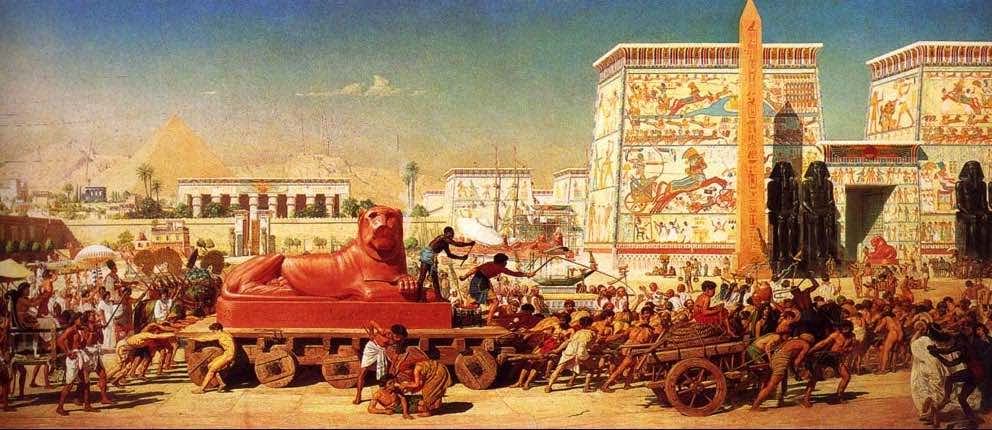
ISRAEL – FROM EGYPT TO THE EXILE
Israel’s dabbling in mysticism reaches into antiquity (around 3500 years ago). It can be traced back to the tribes of Israel during their time in Egypt, to the Exodus and their wandering in the Wilderness, and the influence of Zoroastrian Babylonians while exiled in Babylon.
“How did Zoroastrian ideas find their way into the Abrahamic faiths and elsewhere? According to scholars, many of these concepts were introduced to the Jews of Babylon upon being liberated by the Persian emperor Cyrus the Great. They trickled into mainstream Jewish thought…” (www.bbc.com/culture/story/20170406-this-obscure-religion-shaped-the-west).
Throughout their history, ancient Israel adopted all manner of pagan philosophies, but something particular happened during their Babylonian Exile (598 BC). Over those 70 years, Jewish sages added philosophies from the Babylonian mystery religion to their own mystical fables and by the time of the building of the Second Temple, the seeds of the Oral Tradition were sown.
This included esoteric Kabbalah thought and the rise of a new religion that heralded the birth of Judaism.
“The deported Jews formed their own community in Babylon and retained their religion, practices and philosophies. Some, it would seem, adopted the Chaldean religion (for they name their offspring after Chaldean gods)…
“They called themselves the ‘gola’ (‘exiles’)… and within the crucible of despair and hopelessness, they forged a new national identity and a new religion.” (www.jewishvirtuallibrary.org/the-babylonian-exile)
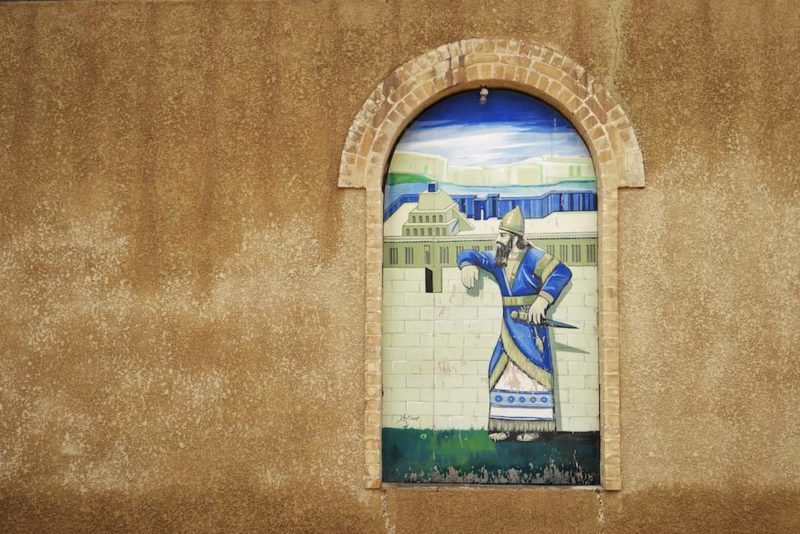
Judaism today sees great value in its Babylonian-Kabbalah origins.
The Zohar (Hebrew ‘Spendor, radiance’) is widely considered the most important work of Kabbalah, Jewish mysticism. It is a mystical commentary on the Torah (five books of Moses), written in medieval Aramaic and medieval Hebrew.” ( https://www.jewishvirtuallibrary.org/the-zohar).
THE ORAL LAW ESTEEMED HIGHER THAN THE WRITTEN LAW
According to Jewish tradition there are TWO holy books – and the book that has been esteemed the most important is not the Torah (Written Word) but the Talmud (Oral Tradition), as the Jewish website below explains (emphasis added):
“There are two ‘Torahs’: the Written and the Oral. In Jewish tradition, both were given to Moses at Mt. Sinai, during the forty years in the desert, and taught to the whole nation. In fact, when Judaism says ‘G-d gave the Torah to Moses at Sinai’ it is talking only about the Oral.” (torah.org/learning/basics-primer-torah-oraltorah)
But the Oral Tradition (or Oral Law) is not the same as the “oracles of God” referred to in the Hebrew Bible. Rather, they are the utterings of some of religious leaders who believed they had more knowledge than Moses (or that they could expound on Moses’ teachings). And it needs to be remembered that there has never been a shortage of people in ancient Israel who claimed their teachings were equal in status, or superior, to Moses’s – even Moses’ own brother and sister at one point. So serious was the contention at times that God had to step in to resolve it. In the case of Aaron and Miriam, the Lord confronted their arrogance for attempting to exalt their ideas and opinions over Moses’ teachings. Afterwards, He struck Miriam down with leprosy (healing her later after she repented).
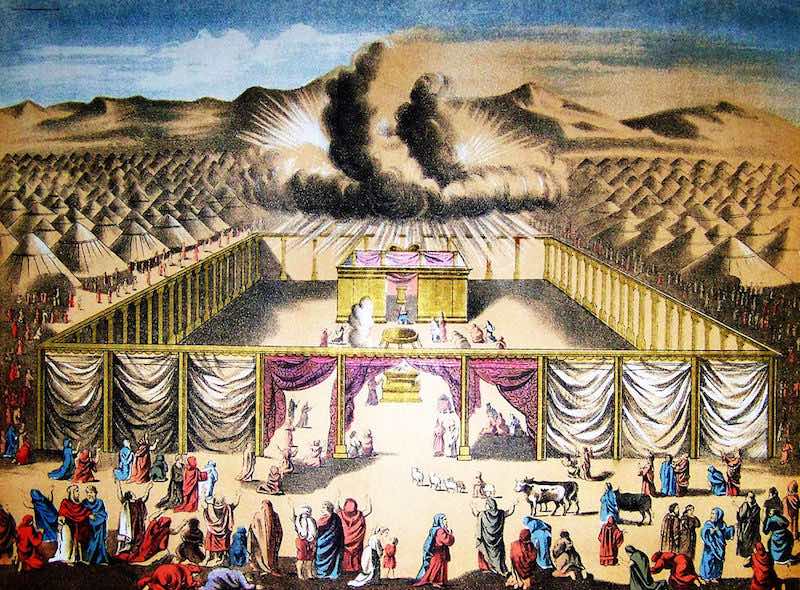
“So they [Miriam and Aaron] said, ‘Has the LORD indeed spoken only through Moses? Has He not spoken through us also?’ And the LORD heard it. … Suddenly the LORD said to Moses, Aaron, and Miriam, ‘Come out, you three, to the tabernacle of meeting!’ So the three came out. Then the LORD came down in the pillar of cloud and stood in the door of the tabernacle, and called Aaron and Miriam. And they both went forward. Then He said, ‘Hear now My words: If there is a prophet among you, I, the LORD, make Myself known to him in a vision; I speak to him in a dream.
‘Not so with My servant Moses; He is faithful in all My house. I speak with him face to face, Even plainly, and not in dark sayings; And he sees the form of the LORD. Why then were you not afraid to speak against My servant Moses?’ So the anger of the LORD was aroused against them, and He departed. And when the cloud departed from above the tabernacle, suddenly Miriam became leprous, as white as snow. Then Aaron turned toward Miriam, and there she was, a leper.” (Num 12:2,4-10, emphases added)
Another example is that of the sons of Levi, when Korah and 250 of the most renowned religious leaders in the congregation rose up against Moses, claiming they were just as holy and equally worthy of his status as God’s spokesmen. Again the anger of the Lord was aroused and he caused the earth to open up to consume all of them (Numbers 16).
Nevertheless, according to the gap theory, Moses (who penned the Torah) must have missed the important point of God telling him about the “Renovation”. This is because Moses does not call this earth a Renovation or a Re-creation and that all things were Re-made but CLEARLY described it as a Creation that was Made!
“And God blessed the seventh day, and sanctified it: because that in it he had rested from all his work which God created and made. These are the generations of the heavens and of the earth when they were created, in the day that the LORD God made the earth and the heavens” (Gen 2:3-4).
So for the gap theory to be true, either Moses was talking in “dark sayings” or “riddles”, as some Bible versions interpret it, or those who have questioned his explanation have a greater knowledge – both of which are claims that cause God’s wrath to burn.

THE DIFFERENCE BETWEEN THE TANAKH, THE TORAH AND THE TALMUD
The Hebrew Bible in its entirety is known as the Tanakh, which consists of three divisions: the Law (Torah), the Prophets (Nevi’im) and the Writings (Ketuvim). The word Tanakh is an acronym derived from the names of these three divisions (known collectively in Christianity as the Old Testament). These oracles of God were received by the Hebrews and written down, and faithfully copied and preserved for us today (Rom 3:1-4). Throughout the Bible, we read, “as it is written in the book of the law”, and “as it is written in the book of the covenant”, and “as it is written by the prophets”.
Now let us compare this with the “two holy books” in Jewish tradition, mentioned earlier. One is the Torah (Written Word) and the other is the Talmud (Oral Tradition or Oral Law).
The Torah is the book of the Law, given to Moses at Sinai, which constitutes the first five books of the Hebrew Bible (also known as the Pentateuch).
The Talmud, on the other hand, was penned in the 4th century AD and is a compilation of the interpretations, writings and philosophies of Jewish rabbis commenting about the Hebrew Bible (Tanakh). It contains the major repositories of the Oral Law found, the Mishnah and the Gemara.
“Talmud: The body of Jewish civil and ceremonial law and legend comprising the Mishnah and the Gemara. There are two versions of the Talmud: the Babylonian Talmud (which dates from the 5th century AD but includes earlier material), and the earlier Palestinian or Jerusalem Talmud.” (en.oxforddictionaries.com/definition/talmud)
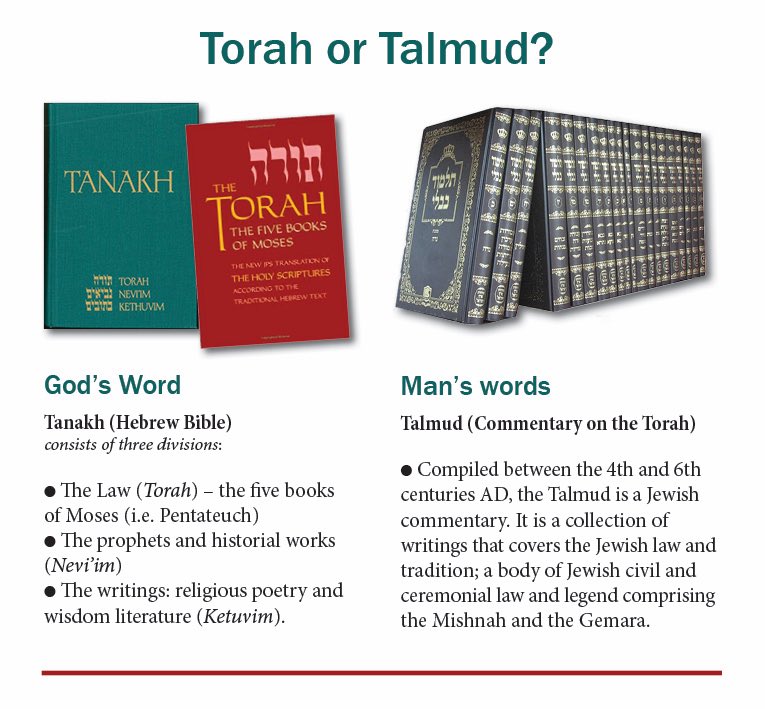
An example of the teachings found in the Talmud is that of Lilith, a notorious demon in Jewish tradition:
“In the Talmud, Lilith becomes not only a spirit of darkness, but also a figure of uncontrolled sexuality.” (www.myjewishlearning.com/article/lilith-lady-flying-in-darkness)
Harry Gersh, author of The Sacred Books of the Jews, writes that the rabbis who contributed to the Talmud did not maintain pure biblical doctrine, especially on the matter of creation.
“The Rabbis of the Talmud speculated on these mysteries, particularly when they were commenting on Genesis and the visions of Ezekiel. The speculations were later embroidered by new ideas that entered Jewish thought from the Syriac Greeks, the Zoroastrian Babylonians, and the Gnostic sect of the Byzantium Christians. From these foreign and domestic concepts and myths, the Jews wove into their mysticism ideas of upper and neither worlds, angels, and demons, ghosts and spirits – ideas that had been unknown or of little importance to the Jews until then.” (Harry Gersh The Sacred Books of the Jews, 1968, p200)
The time of the Second Temple
At the time of the building of the Second Temple, the then-new religion of Judaism elevated the mystical teachings of cabalistic sages (the Oral Law) as more valuable and insightful than the Hebrew Bible itself. So revered and entrenched did these Oral Traditions become, in the new religion of Judaism, that they eclipsed the Tanakh – the Hebrew Bible. That is why the religious leaders did not recognise the Son of God when he walked among them. And when the Pharisees and Sadducees plotted against Jesus and tried to entangle him so they could arrest him, Jesus answered and said to them:
“You are mistaken, not knowing the Scriptures nor the power of God” (Matt 22:29).
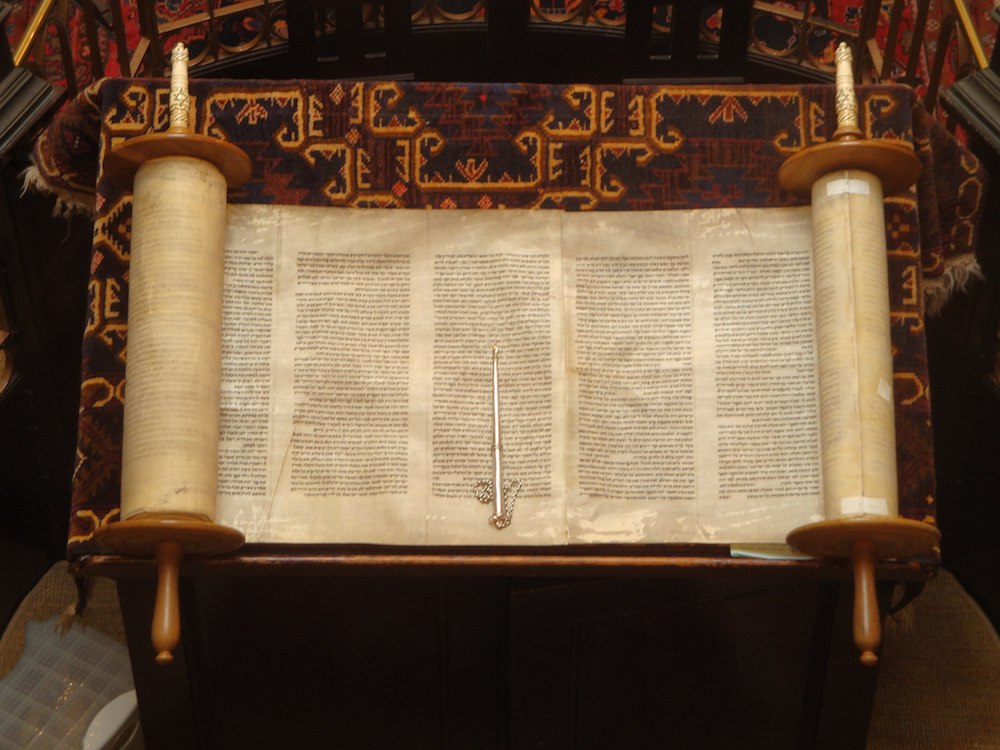
And over time, as the people relied more and more on their teachers of the Oral Law, their understanding of Scripture waned:
“The Written Law is somewhat cryptic and requires explanation” (www.chabad.org/library/article_cdo/aid/361876/ jewish/The-Oral-Tradition.htm).
But it is not God’s Word (the Tanakh) that is cryptic and needs deciphering, it is the esoteric writings of the Jewish sages (the Talmud). This statement by the Jewish religious leaders, of course, reinforces the people’s belief that they need to rely on their teachers to interpret and understand God’s Word, when in reality they are being led further and further away from it. In this way, the Jewish religious leaders hold the people captive. (This is the same in some churches and among many deceptive Christian leaders, too.)
The Kabbalah (the most mystical arm of Judaism) is a subculture embedded within and among mainstream rabbinic Judaism, and I focus on this for a very good reason, as will become apparent further on. It is a religious movement that relies on the esoteric Oral Tradition and searches out “hidden meanings” buried in the text of the Bible.
“The word Kabbalah is based on the Hebrew term קָבָּלה, meaning ‘reception’. This rabbinic method of interpretation of the Torah is ‘received’ by oral tradition, supposedly back to Moses and ultimately God. The mystical esoteric ‘soul’ of the Torah is ‘received’ in the form of special insights giving the initiate hidden meanings of the text. These hidden meanings are esoteric knowledge of the divine nature, His creation of the universe, and His laws governing nature. These insights are considered special knowledge of secret meanings received by oral tradition, meanings not obvious to the reader of the text using normal linguistic grammatical exegesis.” (scholar.ufs.ac.za:8080/xmlui/bitstream/handle/11660/740/ArnoldTP.pdf?sequence=1&isAllowed=y)
Although not all religious Jews are Kabbalists, the overwhelming majority do not read their Bibles but follow what their Talmudic rabbis and their traditions teach them:
“The Pharisees did not feel bound by what is written in the Bible but by the Bible as understood according to the Jewish rabbinic tradition. The Talmudic rabbis were ideological descendants of the Pharisees.
“Thus, in traditional Judaism we as Jews live not by what is written in the Bible (the Written Torah) but by the Bible as interpreted and understood by the Jewish rabbinic tradition (the Oral Torah).

“Those teachers have to be scholars themselves, who are thoroughly versed in Jewish rabbinic texts that have been written over the course of centuries and continue to be written to this very day, who are authorized by their teachers to have studied Jewish law and tradition, and have to be accepted by Jews and Jewish communities as being fit for communal leadership.” (www.quora.com/Do-Jews-follow-the-Talmud-or-the-Torah-or-both; emphases in original)
Kabbalah questions everything about the Hebrew Bible
The Kabbalah claims that every letter in the Hebrew Bible has a numerical value and every word has a sum, and that these have special meanings and significances. Thus it practices the “art” of plumbing the meaning of the individual words of the Torah using a human-derived secret code. (Refer www.myjewishlearning.com/article/midrash-101. Note: the Midrash is part of the Oral Tradition/Talmud.)
“The typical Midrashic way of looking for multiple meanings in the Torah can be seen in how the Midrash approaches the first verse in the Torah: each word, even the individual letters are filled with meanings beyond compare.” (users.abo.fi/htoyryla/creart6.pdf)
An example of how the Midrash looks for other “meanings in the Torah” and how it “approaches the first verse of the Torah” is in the teaching that “In THE beginning” should be translated “In A beginning”. (Refer to (kehillatisrael.net/docs/dt/dt_bereshit.html; emphasis added.) This is because the Midrash teaches that God created many worlds until he was satisfied with this one. I found this fascinating, because one of my gap creation friends has used this very argument in his alternative reading of a number of words in Genesis 1 – that this present world may be one of many.
However, as critics explain, this searching for “deeper meanings” at the word and even letter level changes the scale set of God’s communications from primary to non-contextual.
Thus it loses the crucial text-based semantic and syntactic God-given control we have over the actual meaning of the text as preserved in the manuscripts.

With regard to the history of the new religion of Judaism, it emerged, as previously explained, at the time of the Babylonian captivity. (Nebuchadnezzer, King of Babylon, portrayed in painting.)
After the Exiles returned to the land of Judah, their mystical sages (occult philosophers) began to gain prominence over the priests and the “religion of Judaism” took hold. This was the beginning of a total departure from “Israel being in a covenant relationship with God” and the God-ordained function of the priesthood. And, over the centuries, more and more syncretism crept into their Jewish traditions, as Egyptian, Greek and Roman mysteries were added to their Babylonian mysteries, and mystical Jewish thought continued to evolve, branching into its very own specific mystery religion.
The origin of the Sadducees and pharisees
The Sadducees were the party of high priests, aristocratic families and merchants – the wealthier elements of the population. However, not much is known about their early history. They were a Jewish priestly sect that flourished for about two centuries before the destruction of the Second Temple of Jerusalem in AD 70. They were haughty, wealthy and dominated the Temple and its priesthood. The Sadducees were influenced by Hellenism and collaborated with Rome while under its occupation. However, unlike the Pharisees, the Sadducees refused to go beyond the Torah. “For the Sadducees, the Oral Law – i.e., the vast body of post-biblical Jewish legal traditions – meant next to nothing” (https://www.britannica.com/topic/Sadducee).
As for the sect of Pharisees, they are thought to have originated in the 3rd century B.C. in the days preceding the Maccabean wars. While the Jews were under Greek domination, and the Greeks sought to Hellenize them, there was a strong tendency among the Jews to accept Greek culture with its pagan religious customs. (There was constant conflict between the Sadducees and the Pharisees.)
The Pharisees held to the esoteric principle that God gave the Oral Law to Moses when he was on Mount Sinai and believed that knowledge of God evolved through human reasoning.
And I find it interesting that Jesus specifically singled out for criticism the Pharisees and the scribes, who were the teachers of the Oral Law (later to be compiled as the Talmud).
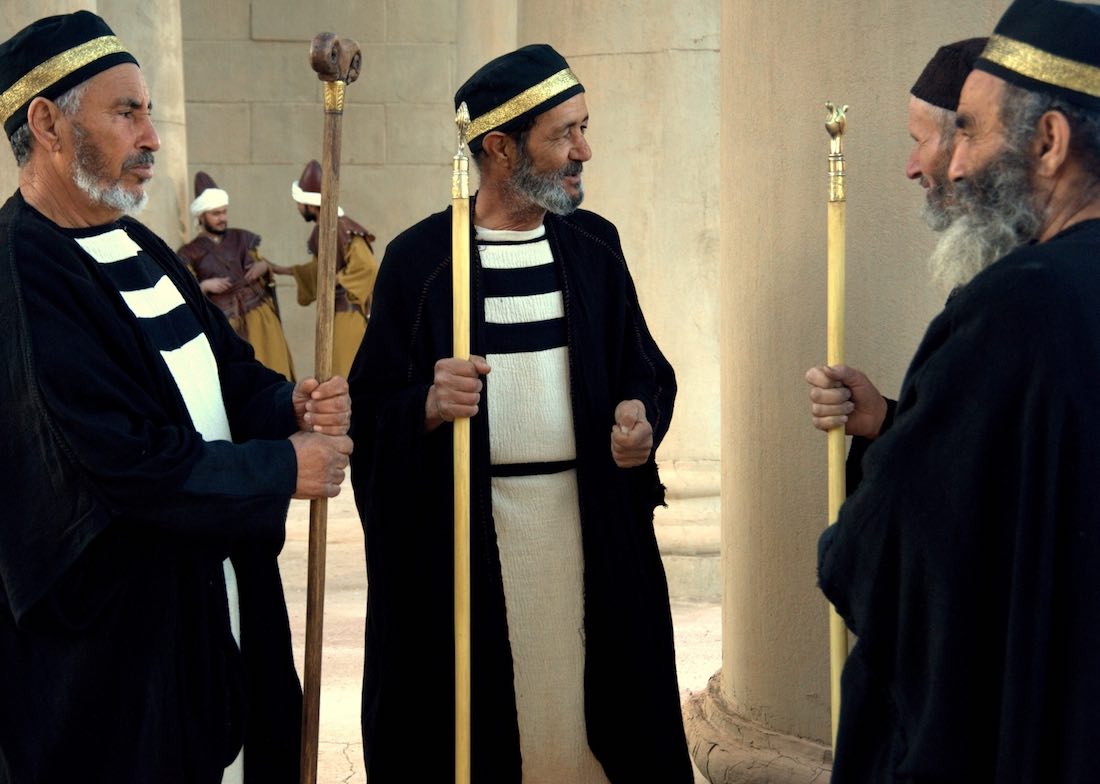
“They interpreted Written Torah according to what they believed the text suggested or implied… they reinterpreted its meaning, seeking scriptural support for their actions through a system of hermeneutics” (jewishrootschristianity.ca).
By the time of Herod’s reign, the Jewish religious leaders had become so deeply corrupted that Jesus ripped into the these people more than any other.
“During the time of Jesus the oral law came to be revered so highly that it was said to go back to Moses himself and to have been transmitted over the centuries orally, paralleling the written law that also derived from him. This is exactly what the Pharisees believed, and also it was these “traditions” that Jesus condemned… (www.bible-history.com/pharisees/PHARISEESTradition.htm)
In Matthew 23, Jesus declared “Woe” to the Pharisees, again and again. This is the Greek word ouai, which means “exclamation of pain and anger”. Jesus was grieved and deeply sorrowful, because these religious leaders were hardhearted and cold hypocrites and they led the people astray. They claimed to represent God and His Word but their father was the devil, they followed the corrupt Oral Traditions and the teachings of men, and they deceived the people (John 8:44; Matt 15:1-9).
Jesus spurned these teachings and spoke straight from the Scriptures and the people were astounded by the simple truths found in God’s Word.
They had never heard anything like it. He spoke with the power of God and they flocked to listen to him (Mark 11:18; Luke 4:32). But the religious leaders hated him for it, as it took away their power over the people. Jesus also warned his disciples against the teachings of the scribes and the Pharisees (Matt 23).
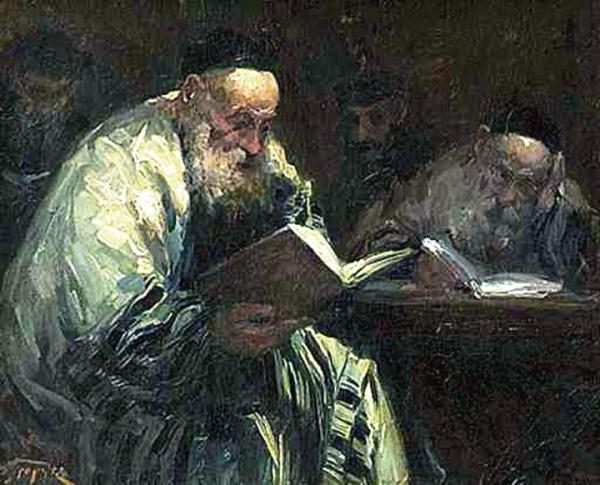
In the second century AD, cabalistic sages were the first scholars to write down and preserve their oral traditions in their foundational religious literature, aka “wisdom literature” – the Zohar.
And I can’t help but think what a great blessing it was that God had not allowed this to take place before the Hebrew Bible and New Testament had been completed, so as to be able to separate God’s Holy Scriptures from the written counterfeits to come.
One of those counterfeits being creation myths, casting doubt on God’s own words and explanations in Genesis 1.
“One of the early forms of Jewish mysticism is called creation mysticism, which focused on the mysterious methods God used to create the world. It describes the creation of the world through the arrangement of particular letters and numbers. A key text in creation mysticism is Sefer Yetzirah ‘The Book of Creation’ from the 2nd cent CE.” (www.world-religions-professor.com/kabbalah.html)
Custance sees value in occult scholars
In Chapter 9 ‘The History of the Gap Theory’, I explain in some detail the history of the Zohar (aka The Book of Light). This is a literary work that is foundational in gap creationism, as expressed by Arthur C. Custance in his book, Without Form and Void: A Study of the Meaning of Genesis. I will be referring to the Zohar often throughout this chapter.
The Zohar – a mystical commentary on the Torah – was penned in the second century AD and it constitutes the most esoteric form of Judaism. This is because it claims to have specially revealed knowledge that explains everything from an exo-biblical perspective.
“Revealed more than 2,000 years ago, the Zohar is a spiritual text that explains the secrets of the Bible, the Universe and every aspect of life. (www.zohar.com/article/what-zohar)
Simeon ben Jocḥai (aka Yohai) was the occult scholar who wrote the Zohar. A student of Simeon ben Yohai’s, Rabbi Yehudah HaNasi, was the then-editor of the Mishnah, which incorporated the teachings of the Pharisees on Jewish law. This was the first written record of the rabbinic traditions of the Oral Law, also known as the Oral Tradition, and later formed part of the Talmud. The second century AD also saw the beginning of Rabbinic Judaism and by the 6th century it had become mainstream.
“Rabbinic Judaism: the normative form of Judaism that developed after the fall of the Temple of Jerusalem (AD 70). Originating in the work of the Pharisaic rabbis, it was based on the legal and commentative literature in the Talmud, and it set up a mode of worship and a life discipline that were to be practiced by Jews worldwide down to modern times.” (https://www.britannica.com/topic/Rabbinic-Judaism)
Thus Kabbalah and Rabbinic Judaism are interconnected, as they each flow from the Jewish mystery religion, which can be traced back to the teachings of the Pharisees, and the time of the Babylonian captivity and further, to the Oral teachings at the time of Moses, and even before the Exodus.
This occult link between the Zohar, the Mishnah and the Talmud is profound.
(The Midrash is part of the teaching of the Mishnah.)
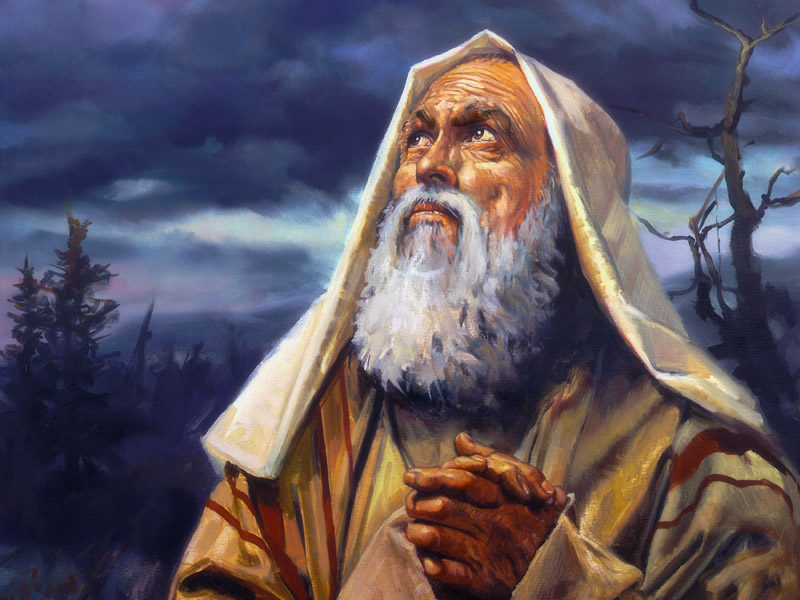
The Oral Law in Judaism is entirely different to the written Torah of the Hebrews and the Mosaic Law.
Today, there are many different movements, branches, trends, streams and even flavours of Judaism, but most have developed from the esoteric Pharisaic movement some 2200 years ago, and their primary authorities are the writings of the Oral Law – aka the Talmudic traditions.
In other words most teachings in Judaism today (and going back some 3500 years) have become indistinguishable from ancient Jewish occult mysticism, having been around before the time of Moses and gaining momentum after the Exile.
Thus anyone who views these literary sources as enlightened knowledge is deceived. And Christians need to separate themselves from these occult teachings – not try to “learn” something from them!
Considering all of this, let us return to Custance’s book promoting the gap theory – Without Form and Void: A Study of the Meaning of Genesis. Here he places a high value in the “traditional teachings” of the Jewish mystery religion, which emerged after the Babylonian captivity, as well as the occult teachings of the Midrash. (Illustration below of Ancient Babylon.)

“Now after or during the Babylonian Captivity, the Jewish people gradually accumulated the comments and explanations of their best-known teachers about the Old Testament for some 1500 years – or well on into the Christian era. This body of traditional teaching was gathered together into the Midrash, which thus became the oldest pre-Christian exposition of the Old Testament.” (Arthur Custance, Without Form, and Void, p5; emphases added)
Notice that?
Custance knows exactly what he is doing in steering people away from the occult origins of the gap theory, by skilfully utilising the devil’s tactics of deception, claiming these sources are the “best known teachers about the Old Testament” which “became the oldest pre-Christian exposition of the Old Testament”.
Kabbalah’s four levels of “enlightenment”
There are four levels of “enlightenment” in Kabbalah: peshat, remez, drash and sod, with each level taking a person further from the Bible and deeper into spiritual mysteries and fantastical tales. As with any secret society or mystery religion, a person doesn’t realise they are entering hard-core occultism until they reach the upper level, which is indecipherable to outsiders, and by then they are convinced it is true.
“The second level [of Kabbalah] is remez, which means hint. This refers to interpretations of the Torah that are not stated explicitly but are rather only hinted at in the text.” (www.thejc.com/judaism/books/the-origins-of-kabbalah-1.6753)
And it seems to me that Custance, in his book Without Form and Void, is covertly operating on the subtler remez level. The reason I say this is because he is skilled in the English language and has littered his book with expressions contrived to get the reader to question the words that God has used. (Ring any bells – Gen 3:5?) He does this by enticing his readers to listen to the voices of sources who tell us what God really meant, according to “comments”, “explanations”, “hints”, “expositions”, “intimations”, “indicators”, “interpretations”, “views”, “beliefs” and “opinions” – all words used by Custance in arguing his case for the gap theory.
And I would like to add that my gap principle friend utilises similar language, claiming that the gap in Genesis is not explicitly written in Scripture, rather it is “inferred”.
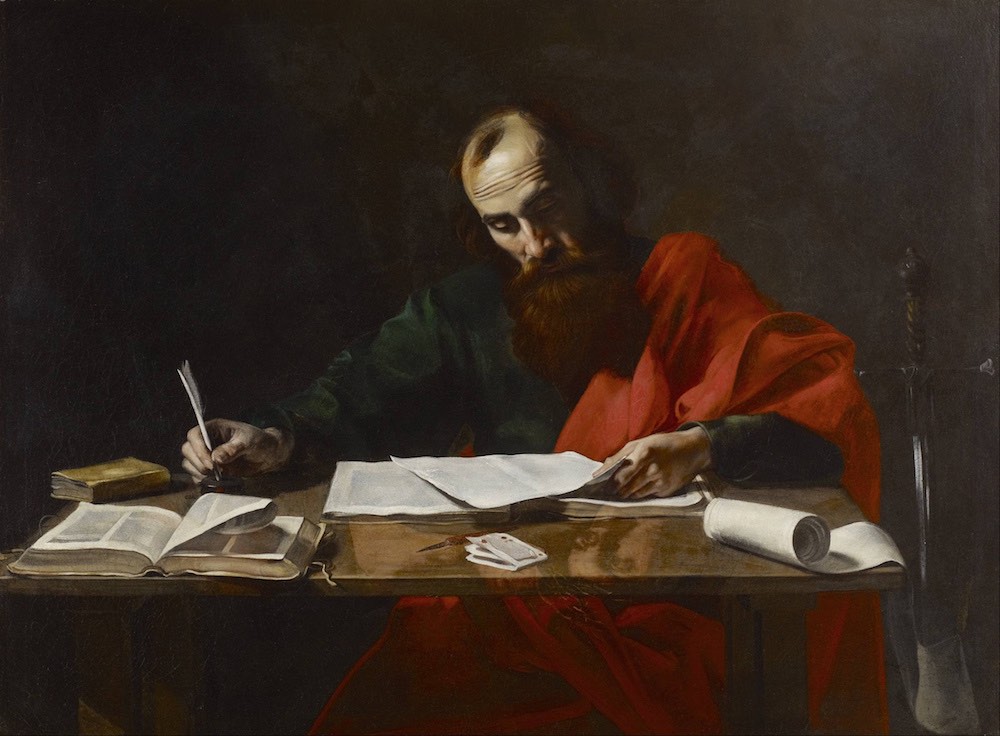
By his own admission, Arthur Custance acknowledges he has no evidence the apostles believed and taught gap creationism but rather makes the valueless claim: “The apostle Paul must have known about it”.
The reader needs to understand this is not the way God’s truth is communicated. Rather, it is slippery speak that comes from someplace else!
By the 1400s, the most esoteric form of Judaism became known as the religion of Kabbalah.
Most Kabbalah teachings are obfuscated – cryptic and coded, and indecipherable and inaccessible to the uninitiated, which is the essence of any occult mystery religion.
Today, Kabbalah has permeated every sector of contemporary Judaism, and most rabbis are mystics to some degree. Kabbalah centres are located all over modern Israel and people visit them from around the world, expecting to be spiritually enlightened. (Below is a photo of a Kabbalah centre in Tel Aviv.) Contemporary Kabbalah is most closely associated with the Ultra-Orthodox, due to its rise in popularity after the birth of Chasidism in the 1700s.
And it is no wonder many Jews have embraced occultism. This is because Satan hates God’s chosen people of the Book and his focus has always been to lead them astray.
As a consequence of their continued unfaithfulness, as detailed in the Scriptures, the Lord ended his marriage with ancient Israel 2500 years ago, when He put her away at the time of the Babylonian captivity.
However, God still holds a very special place for them, because of the fathers and His promises to them. And he tells us that the time will come when they will be given a “new heart” and a “new spirit” and they will know that “I am the Lord” – Eze 36:26; Eze 11:19).

Also, the apostle Paul tells Christians that God has not “cast away His people”. Rather, He has blinded them for a time, so that “salvation has come to the Gentiles… until the fullness of the Gentiles has come” (Romans 11). And Paul warns Christians not to become haughty of this fact, because they have been grafted into the olive tree and can just as easily be removed.
“And if some of the branches were broken off, and you, being a wild olive tree, were grafted in among them, and with them became a partaker of the root and fatness of the olive tree, do not boast against the branches. But if you do boast, remember that you do not support the root, but the root supports you” (Rom 11:17-18).
Kabbalah and an ancient earth
A dictionary description of Kabbalah describes its occult roots and practices:
“Kabbalah: The ancient Jewish tradition of mystical interpretation of the Bible, first transmitted orally and using esoteric methods (including ciphers). It reached the height of its influence in the later Middle Ages and remains significant in Hasidism.” (en.oxforddictionaries.com/definition/us/ kabbalah)
The Kabbalah’s doctrine on creation is fuzzy, open to individual interpretation and mystical to the core… As with any esoteric religion, there is much discussion and little agreement. But the general consensus in Kabbalah is that the earth is ancient, but Darwinian evolution is unproven.
“Relatively old Kabbalistic sources, from well before the scientifically apparent age of the universe was first determined, are in close concord with modern scientific estimates of the age of the universe, according to Rabbi Aryeh Kaplan.” (cs.mcgill.ca/~rwest/wikispeedia/wpcd/wp/c/ Creationism.htm)
“So while is seems clear that natural selection can account for things like beak size, moth coloration and the like (microevolution), the notion that all species have evolved from a single common ancestor (macroevolution) appears to be incomplete” (www.huffingtonpost.com/rabbi-adam-jacobs/a-kabbalistic-view-of-evo_b_846334.html).
And the interesting thing is this: Kabbalah teaches a form of the gap theory.
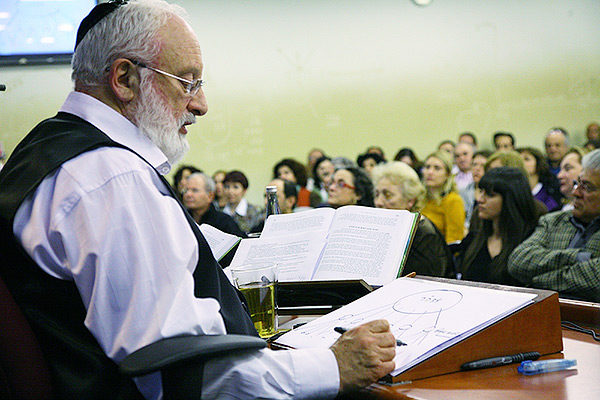
Trying to understand occult teachings, which are a formulation of demonically constructed lies covered with layers of murkiness, is like trying to paddle in mud.
However, I was fortunate to find a Kabbalah website that presents its esoteric version of creation, which is hard going as Custance himself admitted (refer Chapter 9), in a simpler language for the uninitiated.
Of significance is the fact that it rejects young earth creation in the harshest terms, by pouring scorn on the “restrictive” traditional Jewish religious establishment [Hivemind]. It admits that Kabbalah is a “controversial” reading of the Bible, but instructs us to break free from the “well-constructed strong box” of the “literalists” and “fundamentalist [Hebrew] camp”. This is because the genealogies of the Bible are “not accurate” – the mysterious Kabbalah interpretations are, and thus the Bible passages need to be “corrected”. And if we do not wish to be “ignorant” we would be wise to look to ancient “Jewish sages” and our own ability to question “outside of approved parameters” of Scripture for true enlightenment.
It refers to the “creation” and the “re-creation”. This creation, according to the “early mystics in Judaism”, is described as a “Second Creation Story”, because the first ended in “desolation and horror”. We are told that Kabbalists have been given special revelation to decipher the secret code of the Bible. Of particular interest, the Kabbalah version of creation uses all the same arguments as gap creationists for the “correct” interpretation of bara, tohuw and bohuw (along with hayah and asah, as seen on its website), as well as the approved Kabbalah words “restoration and reformation”, which are found nowhere in God’s Word. (Except in the future tense, for example, in Acts 3:21, which speaks about the “restoration of all things” when Christ returns.) It also agrees with the findings of modern science (based on the philosophy of naturalism) regarding the age of the earth. (Italics in original; square brackets and underline added.)
gap creation – a doctrine of the kabbalah
Below, I have pieced together excerpts from the website: “Calling Yisrael”:
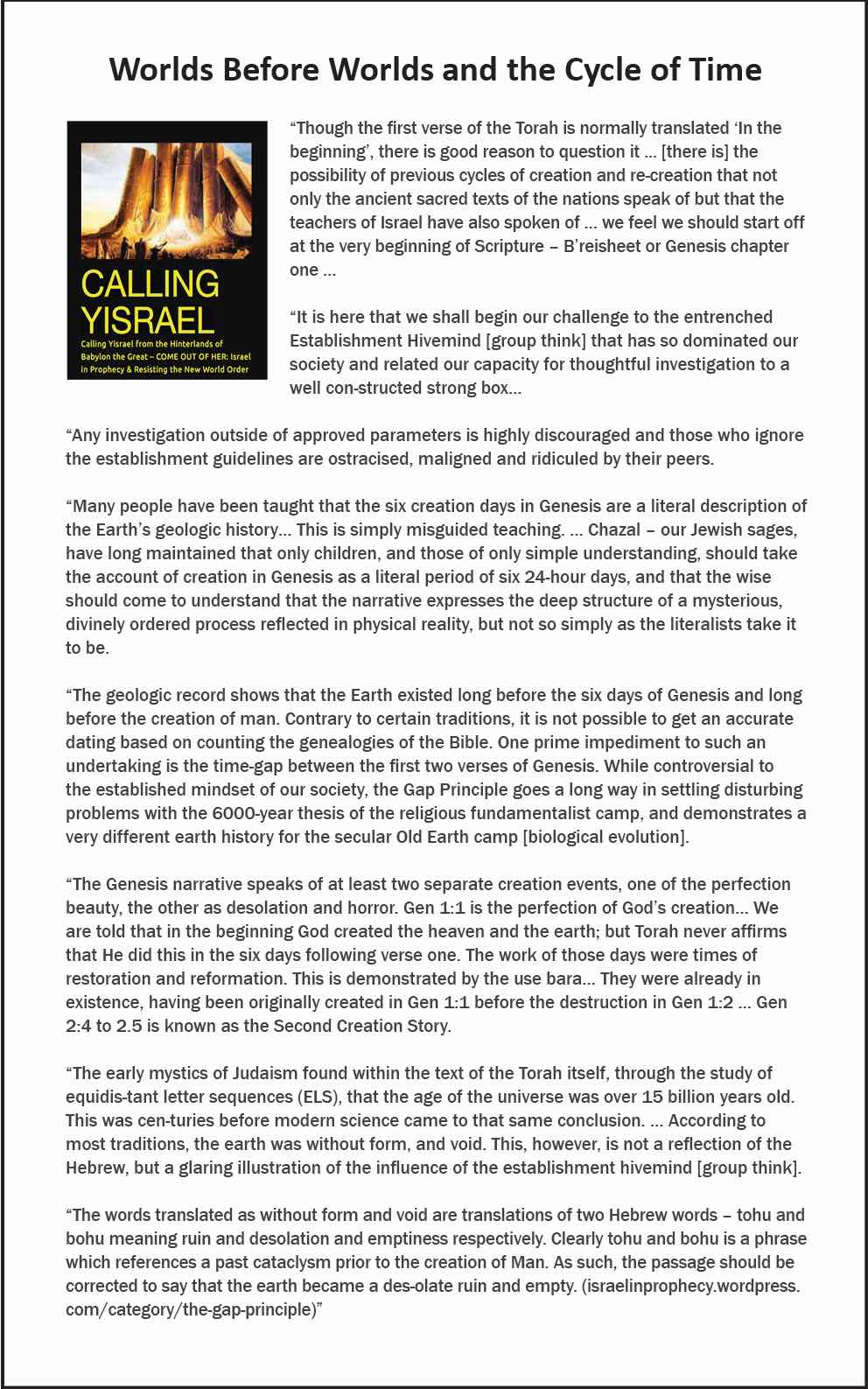
A Hindu-gap-theory connection
Kabbalah has, apparently, always had a lot of knowledge on gap creationism – the conjectured world before Adam:
“The Kabbalists have always had profound insight and understanding into the nature of these pre-Adamic worlds.” (www.scribd.com/document/257036376/shemitot).
And it is not just Jewish fables (Titus 1:14) that believe in an ancient earth and re-creations out of chaos – Hinduism does, too:
“In Hindu cosmology, the universe is cyclically created and destroyed… There are multiple universes, each takes birth from chaos… to be reborn again …” (en.wikipedia.org/wiki/Hindu_cosmology #cite_note-:0-1)
It is no coincidence that ancient mystery religions, Eastern spirituality and old-age evolutionary philosophy are in such agreement. That is why it is crucially important to know the history and origin of any doctrine we feel led to adopt that requires us to alter words found in the Bible and thus the interpretation of Scripture. This creation teaching has even gone so far as to distort the gospel message of certain churches, too (refer to Chapter 4, ‘The Devil Cast to Earth’).
Interestingly, the Torah Institute has a booklet explaining the close connection between Eastern mysticism, Hinduism, the Pharisees, Gnosticism, the Kabbalah, the Oral Traditions, and Rabbinical Judaism and its esoteric (“hidden knowledge” occult) approach to interpreting the Hebrew Scriptures.
“During the 1st and 2nd centuries, HINDU MYSTICISM from the far east invaded the Middle East. Also known as Gnosticism, the new mystical approach to fulfillment became focused on learning ‘secret codes’.
“Receiving the ‘inner consciousness’ that ‘all things spiritual are perfect’ and ‘all things material are defiled’ became the foundational teaching. To achieve perfection, one had to yoke with ‘forces’ to be guided toward fulfillment.
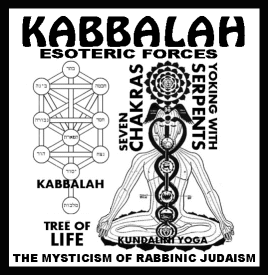
“The Pharisees believed in spirits and the unseen realm, and adapted the new understandings to their own traditions and interpretation of Torah. The rabbi-pupil model was a perfect setting to ‘receive” (kabbalah) the eastern mysticism. New mystical interpretations of the Torah and ‘traditions of the fathers’ became the filter through which one might learn hidden secrets. Today this discipline is called KABBALAH, based on writings from the 13th century called The Zohar. Does Yahusha withhold secret knowledge, or did Yahusha, Paul, and Yahukanon confront this long ago?” (www.torahzone.net/Kabbalah-Article-10-copies.html)
This intimate connection between these ancient and modern mysteries is easily explained – it has originated from the same ungodly source (Rev 12:9).
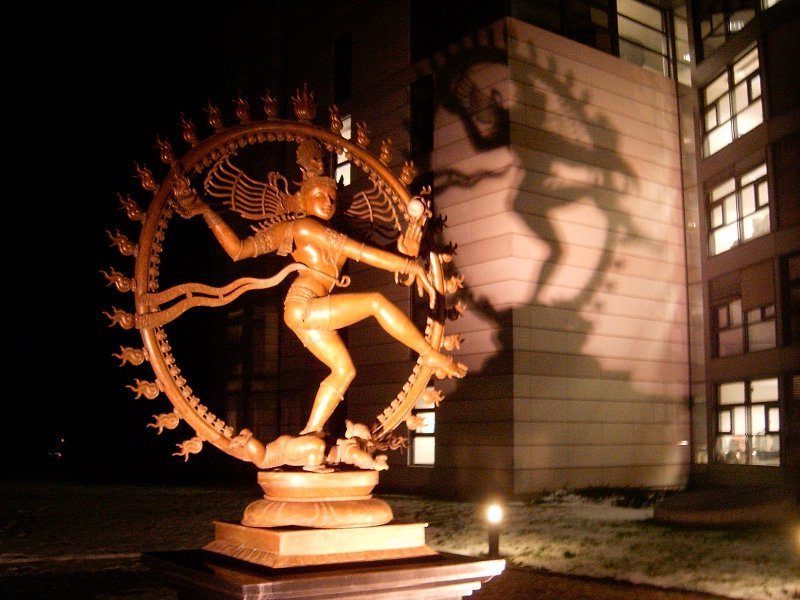
We can see further evidence of this mystical-evolutionary connection (in quantum theory) at the European Organisation for Nuclear Research (CERN) building in Geneva, where a statue of the Hindu ‘god’ Shiva has been placed outside, a gift from the Indian government.
Interestingly, Shiva is also known as the Dancing God and the Destroyer who made this world and when it was plunged into darkness and chaos, he restored it.
The similarities between these philosophies are not coincidences but reconfigurations of the same pagan ideas.
ALL PEOPLE HAVE TRUTHS?
According to defenders of the gap theory, whom I have spoken with, all peoples have some truth, therefore we should not reject gap creationism just because occultists believe in it. This, however, is dangerous reasoning, because any claimed source of “hidden knowledge” outside the Scriptures cannot be trusted. And it stands to reason that the devil has far more success in deceiving believers through (deceived or false) Christian teachers than through direct occult sources.
Placing one’s trust in a biblical scholar such as Arthur Custance is a perfect case in point. How many gap creationists realise (or, worse still, even care) that his information relies on occult scholars and esoteric material from the very teachings Jesus condemned?
God warns his people that we can be deceived and this should concern us (Matt 24:4; 2 Tim 4:3-4). So if any teaching requires us to alter or twist the meaning of the words God has given us, in any way, then we have a falsehood:
“… which untaught and unstable people twist to their own destruction, as they do also the rest of the Scriptures. You therefore, beloved, since you know this beforehand, beware lest you also fall from your own steadfastness, being led away with the error of the wicked;” (2 Pet 3:16-17).
Without this safeguard, we are open to all kinds of deceptions, which takes us back to the importance of being a Berean and putting God’s Word above all others, because “the entirety of your word is truth” (Ps 119:160; John 17:17; Ps 33:4). And this must be a constant checking process throughout our lives, as a complacent Christian is in danger of being unprepared or seriously misled (Matt 25:1-13; Zeph 1:12; Rev 3:15-18).
The fact is, Moses and the ancient Hebrews did not teach gap creationism (Ex 20:11; Rev 21:1) and Jewish occult scholars do. And they admit it is based on a controversial reading of certain words in Genesis 1:1-2. This they support using only a handful of verses taken out of context, which conflict with the remaining Scriptures. (E.g. Nowhere in the Bible is the Genesis 1 creation called a “renovation” or “re-creation”.)

“Is not My word like a fire?” says the LORD, “And like a hammer that breaks the rock in pieces?
“Therefore behold, I am against the prophets,” says the LORD, “who steal My words every one from his neighbour. … who use their tongues and say, ‘He says.’ … and cause My people to err by their lies and by their recklessness. Yet I did not send them or command them; therefore they shall not profit this people at all,” says the LORD. “So when these people or the prophet or the priest ask you, saying, ‘What is the oracle of the LORD?’ you shall then say to them, ‘What oracle?’ I will even forsake you,” says the LORD” (Jer 23:29-33).
God says “Rebellion is the sin of witchcraft” (1 Sam 15:23), and “There shall not be found among you anyone who … practices witchcraft…” (Deut 18:10). In Scripture, the word “witchcraft” is the same word as the word “divination” (qecem).
And one of the dictionary meanings of “divination” is “attempting to discover hidden knowledge by occult or supernatural means”.
Christians LOOKING TO JEWISH LEADERS FOR ENLIGHTENMENT
When Jesus spoke to his disciples and the multitudes, he warned them about the great failings of their religious leaders. (Painting by James Tissot.)
Known as “the eight woes” in Matthew 23, Jesus called the scribes and the Pharisees hypocrites and blind fools: they taught about God, but not the love of God; they converted people to a dead religion, not based on Scripture but on their own traditions; they taught the law but did not practice the spirit of the law – justice, mercy and faithfulness; they presented themselves as being carnally pure, but they were full of greed and indulgence; they put on a mask of righteousness and beauty on the outside, when they were really dead men’s bones on the inside; they professed to have a high regard for the dead prophets of old, when in truth they were cut from the same cloth as those who persecuted and murdered them.
Not only that they would reject the very Son of God Himself and bring false witnesses against Him.
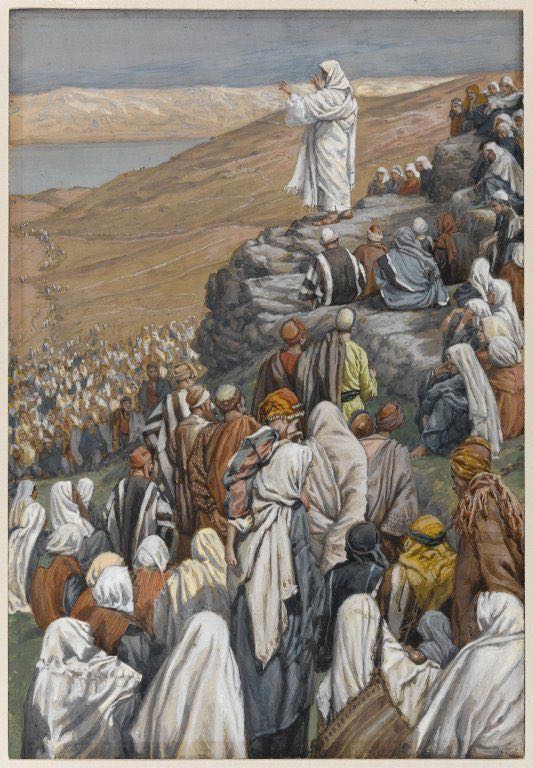
“The Son of man must suffer many things, and be rejected of the elders and chief priests and scribes, and be slain, and be raised the third day.” (Luke 9:22)
Although, it needs to be said, that many of the chief Jewish leaders, those of nobility and with power and great influence, did become believers during Jesus’s lifetime. “Nevertheless even among the rulers many believed in Him, but because of the Pharisees they did not confess Him, lest they should be put out of the synagogue” (John 12:42). And after Christ’s death and resurrection, we are told that “a great company of the priests became obedient to the faith” (Acts 6:7). Some of those who believed and became part of the church were from the sect of the Pharisees (Acts 15:4-6).
in conclusion…
The Blue Letter Bible lexicon, under Pharisaios, confirms that these Jewish religious leaders were a corrupted priesthood sect, having formed after the Jews had been taken into captivity to Babylonian.
“A sect that seems to have started after the Jewish exile. In addition to OT books the Pharisees recognised in oral tradition a standard of belief and life. They sought for distinction and praise by outward observance of external rites and by outward forms of piety, and such as ceremonial washings. They were bitter enemies of Jesus and his cause; and were in turn severely rebuked by him for their avarice, ambition, hollow reliance on outward works, and affection of piety in order to gain popularity, prayers, and alms giving; and, comparatively negligent of genuine piety, they prided themselves on their fancied good works, and affection of piety in order to gain popularity.”
And the big question is this: Why is it some of Christ’s followers today believe they will find more enlightenment outside of the Bible from the teachings of the very people Jesus criticised for not knowing the Scriptures and for hypocrisy and perjury. Furthermore, as the apostle Paul explained, the Old Testament cannot be understood by those who reject Christ.
“But their minds were blinded. For until this day the same veil remains unlifted in the reading of the Old Testament, because the veil is taken away in Christ. But even to this day, when Moses is read, a veil lies on their heart. Nevertheless when one turns to the Lord, the veil is taken away” (2 Cor 3:14-16).
Images: Drpixel/Shutterstock.com; iStock.com/CrossEyedPhotography; iStock.com/Dion Lefeldt Rezaei; Josephine Billeter/Shutterstock.com; Lakeview Images/Shutterstock.com; Lightstock; mpaniti/Shutterstock.com; NASA; Wikicommons.
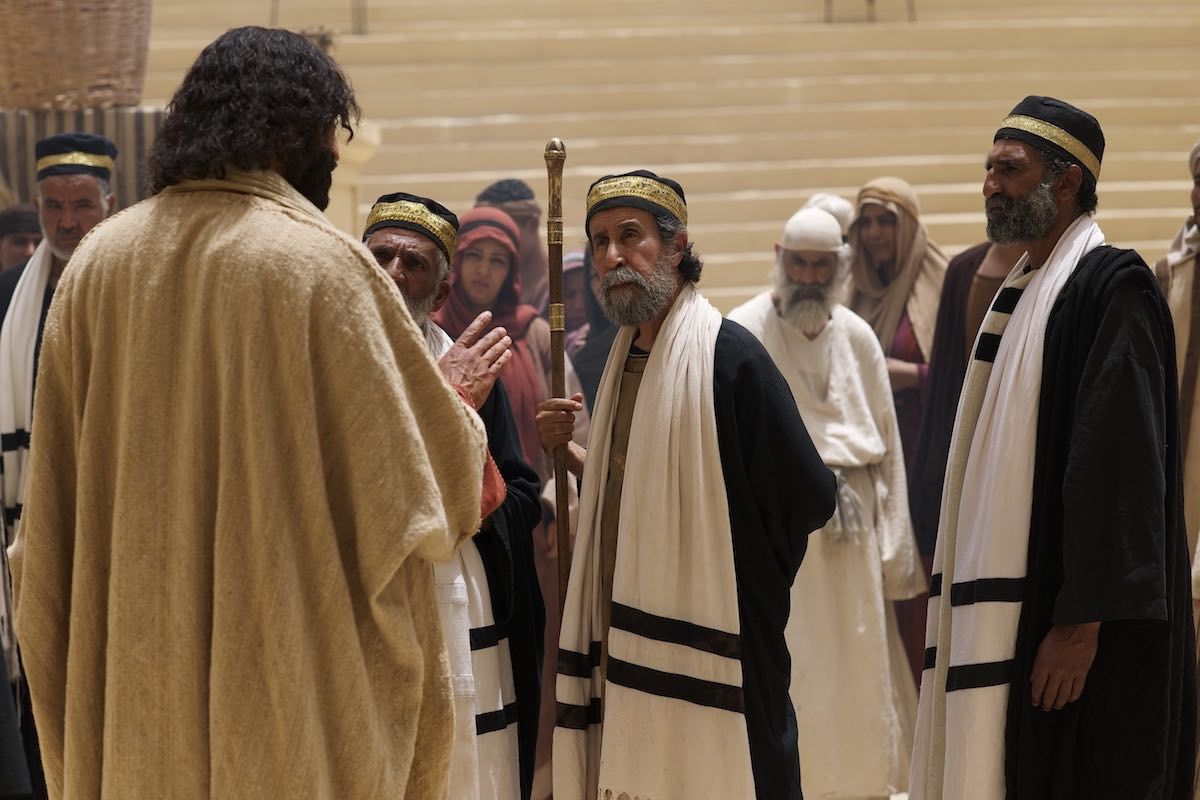
“Then the scribes and Pharisees who were from Jerusalem came to Jesus, … He answered and said to them, ‘Hypocrites! Well did Isaiah prophesy about you, saying: “These people draw near to Me with their mouth, And honor Me with their lips, But their heart is far from Me. And in vain they worship Me, Teaching as doctrines the commandments of men”’.” (Matthew 15:1, 7-9)
